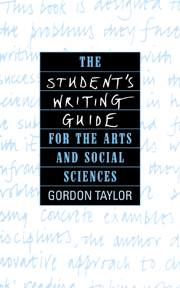Summary
His knowledge is extensive, various, and profound. His mind is equally distinguished by the amplitude of its grasp, and by the delicacy of its tact.
macaulay, of hallam'sConstitutional History of EnglandThe middle of your essay is the opening writ large. Its underlying constituents will therefore be quite similar to those studied in the previous chapter. But there is in the middle a major shift of emphasis away from bald propositions and conclusions towards the careful working-out of arguments and the balancing of interpretations with the evidence you call upon to support them. To justify the case presented in your opening is to develop arguments, to deploy evidence, to evaluate the strength of counterarguments and apparent counterevidence, and to demonstrate their relevance to the question with which you began. In all this your aim is to show not so much that the answer you have decided on is the right answer, but that it is a reasonable point of view to hold.
If the process of writing always went ideally according to plan, then the crafting of a good opening should forestall most (though not all) of the difficulties one might otherwise encounter in writing middles. But just as you need to get an opening of some sort written to help guide the argument of your middle, so you might often find that problems encountered in the writing of the middle lead you back to a reconsideration of your opening.
- Type
- Chapter
- Information
- The Student's Writing Guide for the Arts and Social Sciences , pp. 106 - 129Publisher: Cambridge University PressPrint publication year: 1989



